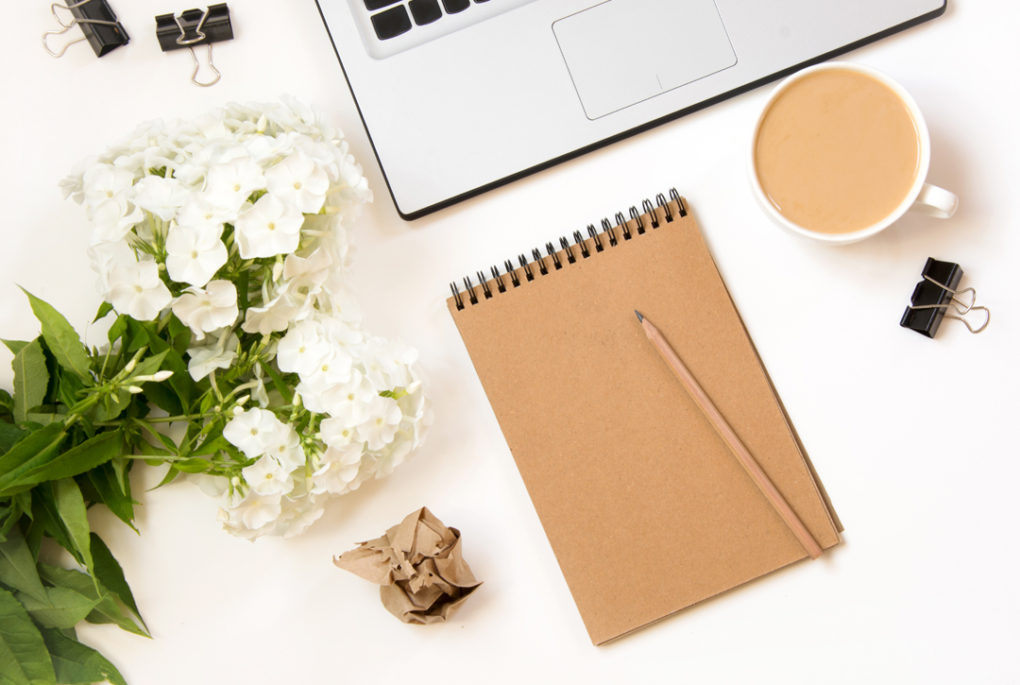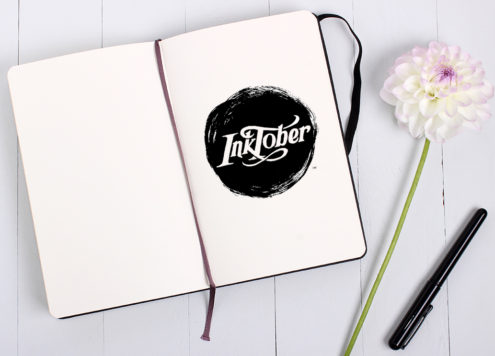Tips + Tricks: Make Your Mark
I used to experience this artistic phobia that my lot often suffer from. It will seem silly to those that don’t suffer from it, but here it is. Putting pencil to a brand new sketchbook, paintbrush to a pristine white canvas…that first mark. The one that takes the perfect to, well, the unknown. I’m addicted to sketchbooks, journals, planners, notebooks…paper in all its varying forms…but sketchbooks? Sweet Santa did I have an insane amount of internal conflict over doing anything more than writing my name in one.¹ I’d buy one, crack open the cover (barely making its spine bend), possibly write my name, and there it would sit. I’d keep it on my desk with the best of intentions. Tomorrow. Tomorrow I would draw that first thing. That masterpiece. That thing that would really put me on the artistic map. Well, maybe just that thing that would really set the tone for the rest of its pages and make people want to sit looking through it. Eventually, it got stacked on a shelf with all the other empty, but still perfect, sketchbooks.
Even before the age of social media, I was paralyzed by the fear of someone looking through my sketchbooks with a furrowed brow of confusion on their face as they wondered, “What is this? I thought she had talent?” I had put this paralyzing pressure on myself to be something no one can be. Perfect. I still stare at the first page of a brand new sketchbook for a little longer than I should, but I’ve mostly gotten over this strange artistic ailment. Want to know how you can cure your sketchbook stage fright? You’re in luck. I’ve a few simple suggestions below.
Just Make Your Mark.
I’m not talking about the lasting impression on the art scene type of make your mark. I’m talking about the scribbly, doodly, nonsensical sort of make your mark. Just take that first page and go all in with reckless abandon. Make it clear that you’re the boss of this sketchbook and you’ll put whatever the hell you want in it. If you’re thinking, “Easy there, Kelly…that’s just a little too outside the box for this kid.” I’ve some ideas for you that are a little more sophisticated than abstract scribble. Write a series of quotes or poems that inspire you, break out your favorite washi tape and stick in some bits you’ve collected that make you feel good when you see them, make this the page where you do your pen tests or color swatches so that you know how the paper handles your medium of choice and you always have your color references on hand. It really doesn’t matter what it is. The mental block is likely just that first page. Once you get something on it, once you make your mark, the battle is won.
Embrace Your Inner Child.
Remember when we were little and we’d put crayon to paper without even a single thought about if what we would draw would be good enough? We’d draw our house with our version of a family and whatever else struck our fancy that day and we’d expect it to be hung on the fridge or the wall until our next masterpiece crowded it out of rotation. And we were proud of what we did. We drew because we loved it and we were never short of great ideas. And crayons. Man do did I love crayons. So embrace your inner child and stop worrying about what other people think. This is supposed to be something you enjoy doing. Getting bogged down by what other people think doesn’t sound all that enjoyable to me. Sketchbooks are supposed to be places of practice. A safe place for mistakes and exploration. They are a place to get the bad ideas out to make way for the good one’s that you’ll develop into finished pieces.
Remove Some Pressure.
The reality is…no one needs to see your sketchbooks. No one. For those of you that journal in a traditional sense, do you show those to people? Do you only write what might be acceptable to someone that happens upon it or do you spill your guts? Why should your sketchbook be any different? One of the greatest uses of a sketchbook is so that you can look back on them later and see how far you have come, see how you’ve grown, see the things that could still use improvement, get inspired by your own work. Not so that other people can. If you have firm beliefs that your sketchbook should be on display²…
Use Different Sketchbooks.
Have several, in fact. Use one that is strictly for study. Use it to practice drawing anatomy or animals or botany or whatever that thing is you are focusing on learning at the moment that you don’t want muddling up the pages of a more properly developed sketchbook. Make it something cheap that you can just throw away when you’re done or make your own out of scraps of paper. Use another one for things a bit more involved, but that you really don’t ever show anyone.³ You can shake out ideas in this and not worry about anyone seeing it. Maybe it even has pages that easily tear out just in case something goes seriously wonky and you can’t bear to have it in there anymore. Use your mother of all sketchbooks, your favs, for the more finished pieces. Maybe it’s the sketches you’ve done in the mid-range book that you want to fine tune. This is the book you are willing to leave on the coffee table or snap some shots of for your social media. No one needs to know that there were dozens of iterations before you got to that one.
Dismantle Your False Notion of Perfection.
This is a tricky monkey, and I’ll expound on this in another post, but stop trying to be perfect or to produce work that is as good as [insert artist you idolize here]. The only work you should be comparing your current work to is your past work. Period. Keep working to get better, to hone skills, to learn new things…but never keep working to be as good as someone else. We don’t want to see work that is just like someone else’s. We want to see your work. Your style and your ideas brought together in inspiring ways. Besides, perfect is boring.
Before I go, I’ll let you in on a secret. The best and most interesting sketchbooks are the one’s stuffed to the brim with messy exploration. Tactile goodness, mistakes and how you solved them…or better yet, how you just let them live on a page and tell their own story without forcing them to be something better. A full sketchbook is a happy sketchbook.
¹ And even that took a lot of thought and careful planning.
² Because maybe you’re trying to develop a habit and the accountability that goes with showing what you’re doing helps with that or you’re starting a YouTube channel or blog to develop your artistic venture a bit more.
³ Keep it secret. Keep it safe.






1 Comments
Rachel
You’re amazing! Always encouraging others while you motivate yourself. Keep pushing that glass ceiling friend!! You got this!!